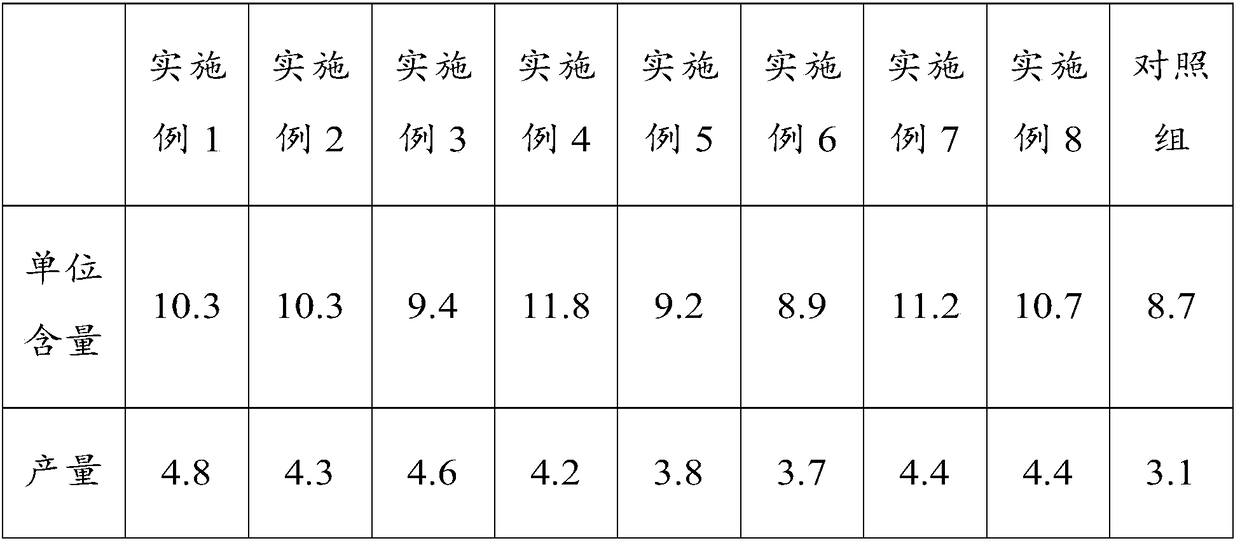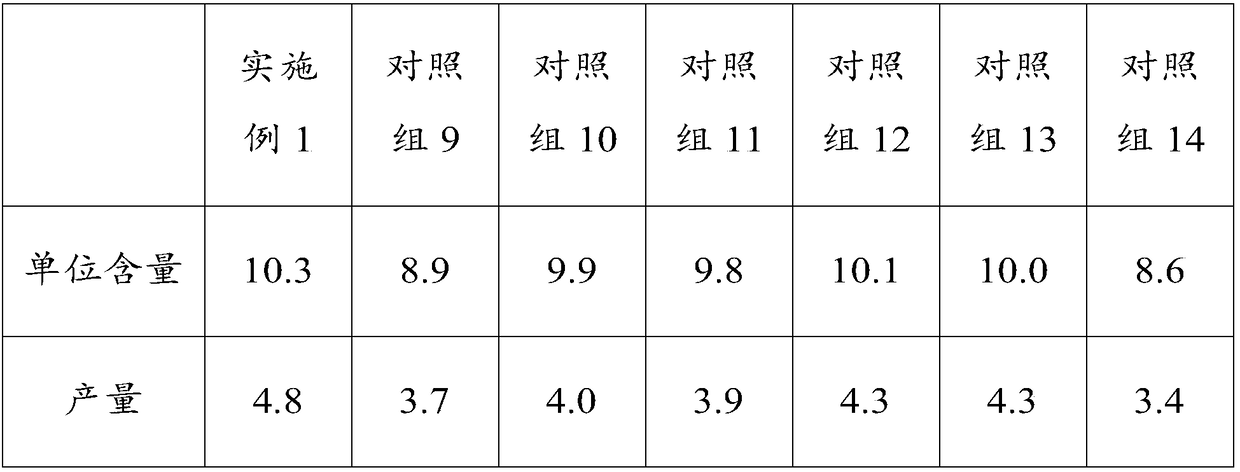Method for producing beta-carotene through fermentation of blakeslea trispora, and beta-carotene
A technology of Blakeslea trispora and carotene, which is applied in the field of fermentation engineering, can solve the problems of reducing the metabolic flux of carotenoids, the decrease of unit production efficiency, and the slowing down of product accumulation rate, so as to improve the yield/cost ratio and simplify Operation, the effect of reducing energy costs
- Summary
- Abstract
- Description
- Claims
- Application Information
AI Technical Summary
Problems solved by technology
Method used
Image
Examples
Embodiment 1
[0046] The primordial B. trispora positive and the primordial B. trispora minus were respectively inoculated on the slope containing the PDA medium, cultured at 28°C for 6 days, and then transferred to the seed medium at 28°C, Cultivate for 48 hours at 220 rpm, and inject air at a flow rate of 1.5 vvm during the cultivation process.
[0047] The cultured B. trispora positive bacteria and B. trispora negative bacteria were inoculated into a fermenter containing a fermentation medium at a weight ratio of 1:5. At the time of inoculation, the dry weight of the biomass of B. trispora positive and B. trispora negative was 15g / L.
[0048] At the same time, after inoculation, dry compressed air was introduced into the fermentor at a flow rate of 1.5 vvm, and then fermented at a stirring speed of 200 rpm. During the fermentation process, the biomass dry weight of the fermentation system can reach about 45g / L. Phytic acid was added during fermentation to control the pH of the fermentation ...
Embodiment 2
[0053] B. trispora trispora positive and negative B. trispora trispora were respectively inoculated on a slant containing PDA medium, cultured at 26°C for 8 days, and then transferred to seed medium at 26°C, Cultivate for 52 hours at 200 rpm, and inject air at a flow rate of 1 vvm during the cultivation process.
[0054] The cultured B. trispora positive bacteria and B. trispora negative bacteria were inoculated into a fermenter containing a fermentation medium at a weight ratio of 1:3. At the time of inoculation, the dry weight of the biomass of B. trispora positive and B. trispora negative was 12g / L.
[0055] At the same time, after inoculation, dry compressed air was introduced into the fermentor at a flow rate of 1 vvm, and then fermented at a stirring speed of 180 rpm. During the fermentation process, the biomass dry weight of the fermentation system was 40 g / L. Phytic acid was added during the fermentation process to control the pH of the fermentation system to 6.2.
[0056]...
Embodiment 3
[0060] The primordial B. trispora positive and the primordial B. trispora minus were respectively inoculated on the slope containing the PDA medium, cultured at 30°C for 4 days, and then transferred to the seed medium at 30°C, Cultivation was carried out at 240 rpm for 44 hours, and air was introduced at a flow rate of 2 vvm during the cultivation process.
[0061] The cultured B. trispora and B. trispora negative bacteria were inoculated into a fermenter containing fermentation medium at a weight ratio of 1:7. The dry weight of the biomass of Laminella spp. is 10g / L.
[0062] At the same time, after inoculation, dry compressed air was introduced into the fermentor at a flow rate of 2vvm, and then fermented at a stirring speed of 220rpm. During the fermentation process, the biomass dry weight of the fermentation system was 50g / L. Phytic acid was added during fermentation to control the pH of the fermentation system to 6.0.
[0063] When the fermentation is 60h, the feeding amount ...
PUM
 Login to View More
Login to View More Abstract
Description
Claims
Application Information
 Login to View More
Login to View More - R&D
- Intellectual Property
- Life Sciences
- Materials
- Tech Scout
- Unparalleled Data Quality
- Higher Quality Content
- 60% Fewer Hallucinations
Browse by: Latest US Patents, China's latest patents, Technical Efficacy Thesaurus, Application Domain, Technology Topic, Popular Technical Reports.
© 2025 PatSnap. All rights reserved.Legal|Privacy policy|Modern Slavery Act Transparency Statement|Sitemap|About US| Contact US: help@patsnap.com


